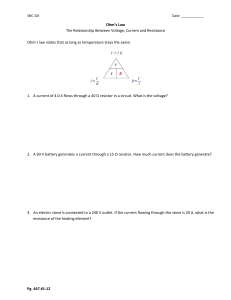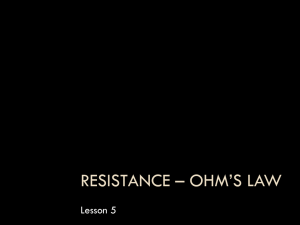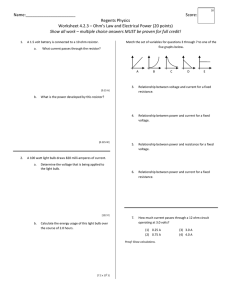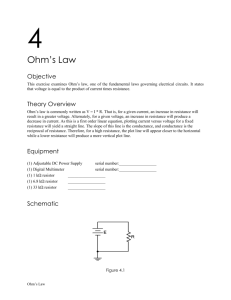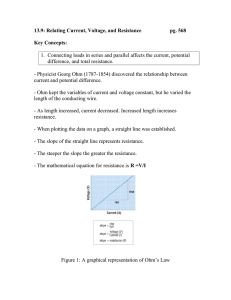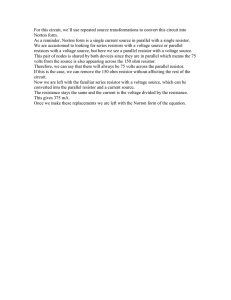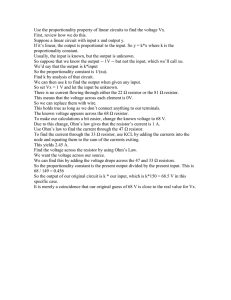Ohm's Law Lab - Norwell Public Schools
advertisement
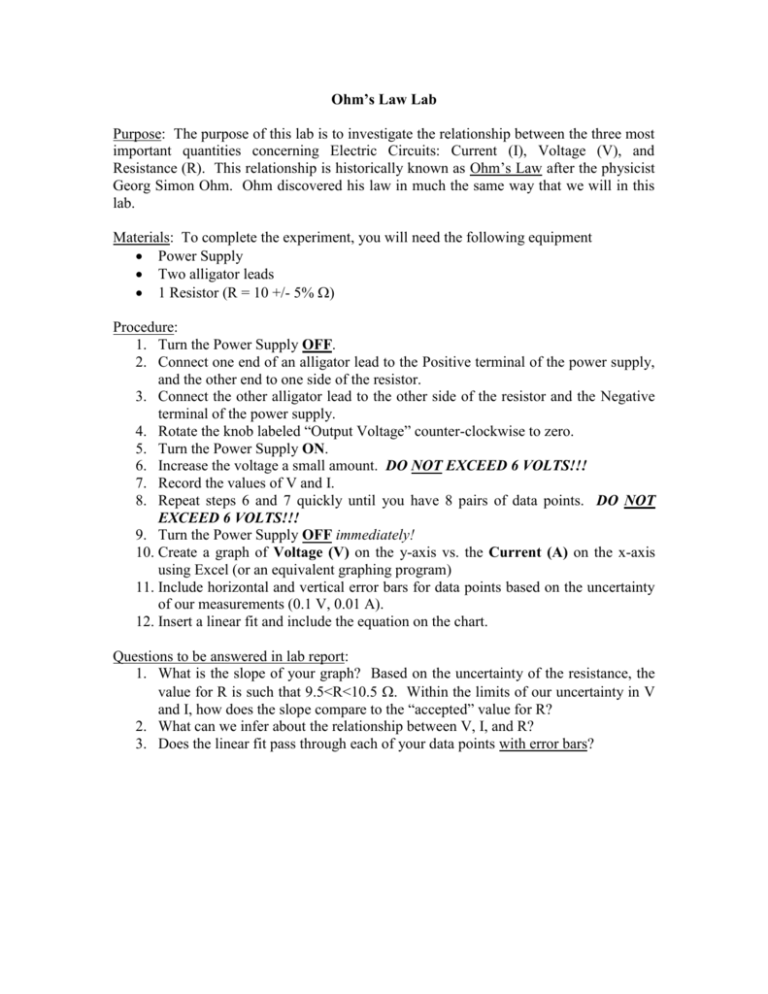
Ohm’s Law Lab Purpose: The purpose of this lab is to investigate the relationship between the three most important quantities concerning Electric Circuits: Current (I), Voltage (V), and Resistance (R). This relationship is historically known as Ohm’s Law after the physicist Georg Simon Ohm. Ohm discovered his law in much the same way that we will in this lab. Materials: To complete the experiment, you will need the following equipment Power Supply Two alligator leads 1 Resistor (R = 10 +/- 5% ) Procedure: 1. Turn the Power Supply OFF. 2. Connect one end of an alligator lead to the Positive terminal of the power supply, and the other end to one side of the resistor. 3. Connect the other alligator lead to the other side of the resistor and the Negative terminal of the power supply. 4. Rotate the knob labeled “Output Voltage” counter-clockwise to zero. 5. Turn the Power Supply ON. 6. Increase the voltage a small amount. DO NOT EXCEED 6 VOLTS!!! 7. Record the values of V and I. 8. Repeat steps 6 and 7 quickly until you have 8 pairs of data points. DO NOT EXCEED 6 VOLTS!!! 9. Turn the Power Supply OFF immediately! 10. Create a graph of Voltage (V) on the y-axis vs. the Current (A) on the x-axis using Excel (or an equivalent graphing program) 11. Include horizontal and vertical error bars for data points based on the uncertainty of our measurements (0.1 V, 0.01 A). 12. Insert a linear fit and include the equation on the chart. Questions to be answered in lab report: 1. What is the slope of your graph? Based on the uncertainty of the resistance, the value for R is such that 9.5<R<10.5 . Within the limits of our uncertainty in V and I, how does the slope compare to the “accepted” value for R? 2. What can we infer about the relationship between V, I, and R? 3. Does the linear fit pass through each of your data points with error bars?
